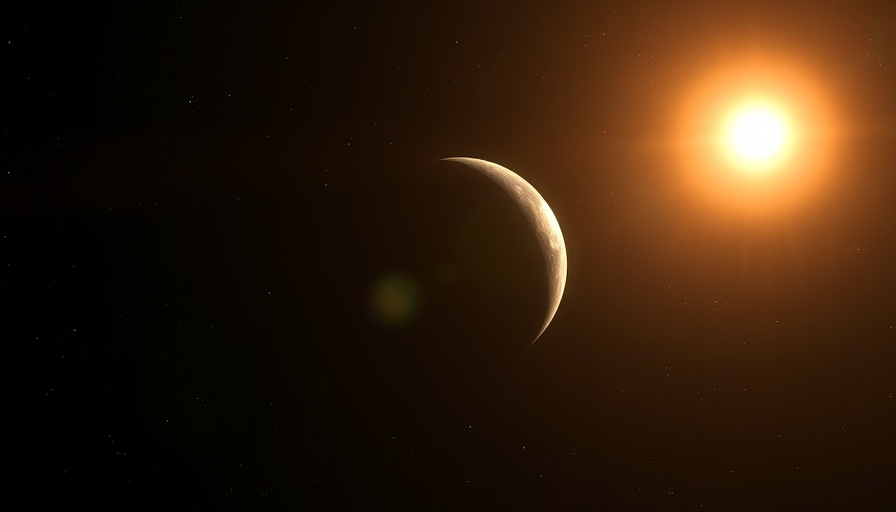
The Discovery of WD 1856+534 b: A Groundbreaking Find
The astronomical community is abuzz following the James Webb Space Telescope's (JWST) groundbreaking discovery of WD 1856+534 b, the coldest exoplanet discovered to date, located about 80 light-years from Earth. This Jupiter-sized giant orbits a dead star—an intriguing reminder of the universe’s complexity. Discovered in 2020, early arguments about whether it was a true planet or merely a brown dwarf have now been put to rest with sophisticated measurements from JWST, which have provided a clearer picture of its mass, temperature, and light.
What Makes WD 1856+534 b So Unique?
WD 1856+534 b's orbit is particularly fascinating because it survives in what is termed the "forbidden zone". This region is perilously close to its star, which expanded significantly before collapsing into its current form as a white dwarf. According to Dr. Mary Anne Limbach, the lead astronomer for the study, this finding challenges previous assumptions regarding planetary survival after the violent death of a star. It opens up new perspectives on planetary resilience and adaptation.
Coldest Planet Ever: What This Means for Future Discoveries
This exoplanet's astonishingly low temperature of -125 degrees Fahrenheit (-87 degrees Celsius) positions it as an invaluable target for future atmospheric studies. By confirming it as a planet rather than a failed star, researchers can now set their sights on additional exoplanets, which could be just as exciting. Upcoming JWST missions hope to discover planets that are even colder, potentially leading to a better understanding of the climatic conditions that might support life.
The Implications of This Research
WD 1856+534 b's discovery not only aids in refining our models of planetary evolution but also raises important questions about the conditions necessary for life in the universe. If researchers can establish how planets navigate the gravitational turmoil left in a star’s aftermath, we may gain insight into the possibilities for life existing in similar environments across the cosmos.
Looking Ahead: Future Innovations in Space Exploration
As we delve deeper into the universe, the JWST represents a revolutionary leap in observational technology. The data we glean will contribute to a more nuanced understanding of the cosmos and refine our search for extraterrestrial life. The ongoing advancements within the field of space exploration not only reflect our curiosity but also our desire to understand our place in the universe.
As the JWST continues its mission, expect more groundbreaking discoveries that will keep reshaping our understanding of space, reflecting an era of unprecedented innovation.
 Add Row
Add Row  Add
Add 




Write A Comment